One of the biggest limitations, when you’re purchasing a low budget electric guitar, is that there is isn’t a large option of color choices for these instruments which is why in this occasion we have decided to let you know how to paint a guitar in the right way and what to prepare beforehand.
If you happen to be looking for a specific custom guitar color or you’re just looking to refinish a guitar, it’s actually pretty simple to learn how to refinish and repaint a guitar yourself!
Before you get into refinishing your instrument, know that refinishing and repainting a guitar is much more difficult than refinishing any other wood object, as a large amount of effort and attention has to be paid in order to achieve a smooth, sleek, factory appearance.
When starting out this project, make sure that you’re prepared to take your time, as painting guitars and finishing their guitar body in the proper manner is a lengthy process that can take weeks to accomplish.
Make sure that you don’t rush when doing this job, as you may feel like there’s a pressure being put on you to finish the job up quickly so that you can get back to playing your instrument.
Here’s what you’re going to need to get into your repainting project:
- Guitar
- Orbital sander
- Sanding paper or sanding sponge
- Fine grit, medium, and coarse sandpaper
- Vacuum cleaner
- Cloths
- Mineral spirits
- White Primer
- Spray cans or paint
- Spray gun (if you decide to use spray cans)
- Clear colour coats
- Ultra-fine sandpaper pads
- Dust mask and eyeglasses
- Wire cutters
- Screwdriver
- Allen wrenches
- Soldering iron and solder
- Masking tape
If you are doing your own paint job, make sure that you follow some simple guidelines that we list in this article and that you don’t rust, as your rush job and mistakes will show through in your final results!
How to Repaint or Restain, or Refinish a Guitar
1. Begin to disassemble your guitar
You’re going to want to start the process of repainting your guitar by first disassembling the instrument.
You can start this process by removing the strings of your guitar, just by clipping the strings away with a pair of wire clippers or string clippers.
There is no way that you can repaint a guitar with this strings on, which means that when you’re finished painting your guitar, you’re more than likely going to need to re-adjust your truss rod once you put the guitar back together.
This volume presents absolutely everything that any guitar repairman, player, builder or owner needs to know about the proper care of every kind of guitar. It covers the repair, set-up, restoration and construction of acoustic and electric guitars, and includes hundreds of diagrams.
2. Take the neck off of your guitar
After removing the guitar strings from the instrument, you’re going to next work on removing the neck of the instrument.
Guitar necks that bolt on are actually pretty easy to remove, as all you have to do is unscrew the bolts that are on the back of the neck joint and gently wiggle the neck free.
However, if you happen to have a neck that’s glued on, glued necks aren’t meant to be removed, so you’ll just have to leave the instrument’s neck alone and repaint it to match the rest of the body.
3. Remove the hardware from your guitar
Once you’ve removed the neck of the guitar, you’ll work on removing all of the hardware on the guitar. You can use a screwdriver or an Allen wrench to remove the bridge, knobs, strap buttons, pickguard, pickups, and the output jack.
There are some guitar models where the output jack and knobs are wired to the pickups through holes that are in between each cavity, so you’re just going to need to cut the wires in order to remove each piece of hardware.
However, you should ensure that you know how the wires are wired so that you can put everything back together correctly.
4. Consider Removing your Guitar Bridge Studs
The bridge studs are what you’re going to work on after removing some the rest of your hardware. Some instruments don’t have any bridge studs, but the bridge of the guitar can just be unscrewed from the body of your instrument.
Sometimes, it can be difficult to remove bridge studs because they’re hammered into the wood of the guitar.
If you’re really desperate to remove the bridge studs, you can heat the wood up with a soldering iron so that the wood heats up and when the studs start to cool down, they will contract and become easier to remove. The downfall to do this is that when you use pliers to remove the bridge studs, you can scar the finish of the studs and actually end up ruining their appearance.
5. Organize your hardware
Now that everything is removed from your instrument, you should set all the hardware and fasteners aside in plastic baggies and label the baggies.
Refinishing your instrument can take you a couple of weeks (or even a few months), so you’re really going to want to make sure that you have each bolt and screw labeled, as this will help to prevent any confusion when you’re going and reassembling your guitar.
6. Remove the Old Guitar Finish by Sanding
Since all of your hardware is now off of your instrument, you’re going to start to work on sanding the existing finish on the guitar. When sanding the existing finish on the guitar, you have two options on how you can go about on this process.
You can decide to either sand away the finish completely, or you can rough up the finish that’s already on the guitar to put on a fresh coat of paint that’s going to stick to the instrument.
When repainting your guitar and you’ve decided to go with a stain, a translucent paint, or going back to the original finish that’s darker than the color of paint that you’re going with, you’re going to completely remove the finish that’s already on the instrument. If you’re only going to use a solid paint on your instrument, then you’re only going to need to rough up the surface of your instrument.
Keep in mind that a lot of guitar builders agree that a thick coat of paint or finish will tonally diminish your instrument.
7. Use an orbital sander
Next, take an orbital sander (I recommend this Porter Cable Random Orbital Sander w/dust vac port) to remove most of the finish. You can fit an orbital sander with some coarse grit sandpaper and work it over the entire body of your instrument, using circular and smooth strokes.
Though you may be extremely tempted, don’t use paint stripper; not only is this an extremely toxic and messy process, but most paint strippers also don’t have the capabilities to remove the rock hard polyurethane that a lot of guitar manufacturers use.
I personally recommend this sander as it's easy to manuever and comes standard with a dust vac port for efficient dust removal for delicate sanding projects such as this.
8. Take hand sandpaper to get in fine crevices
After using your sander, if you’ve noticed that there is still finish on your instrument, you can use sandpaper to remove the rest of the finish.
Curved areas on your guitar are going to be difficult for your sander to reach, so using coarse grit sandpaper or a coarse grit sanding sponge can be used to remove the finish in these hard-to-reach places.
Recommended Hand Sander: Can use MOST (in the 200-400 grit range), but I specifically recommend this 4-pack, starting with the 220 grit and working your way down.
4 different grit includes: 60, 80, 120, 220. Coarse, Medium, Fine and superfine. Sanding sponge Size: 4 x 2.8 x 1 inch.
9. Get out your finer sandpaper
Once you’ve finished using the sandpaper, you’re going to work on smoothing the guitar’s body. You can use a fine grain of sandpaper of to smooth out the wood on the guitar.
You’re going to want to work over the entire body of the guitar with a medium grit sandpaper (120 grit) and go back over again with the entire body and use an even finer grit of paper (220 grit).
10. Vacuum up your mess
Now that you’re all done working on removing the finish of the guitar and smoothing the body down, you’re going to need to remove all of the dust on the guitar.
A vacuum cleaner with a hose attachment will remove most of the dust that came from your sanding.
In order to remove additional dust using a can of compressed air to spray the dust away or you can wipe away the dust with a moistened cloth that’s been dampened with water.
11. Use a grain filler
Unless you are purposefully going for the unfinished and distressed look, you are going to want to apply grain filler to your guitar’s body when you’re working on mahogany or other porous woods.
A grain filler is another term for putty or a filler to make your guitar’s surface even for when you start painting.
If you decide to go with a filler, choose an oil-based or a water-based fill that will match the finish or paint that you’re using.
Recommendation: Stick to a WATER based grain filler like this one as it’s less mess and dries faster.
You can get by with any water based wood filler, but the folks at ColorTone created a grain filler specifically for guitars which I highly recommend! NOTE: you can also find different color variations (e.g. mahogany) if you prefer a particular finish.
12. Apply mineral spirits
Once you are all finished applying a grain filler, use mineral spirits to remove all of the oils that are on top of your guitar’s body. After you’ve applied the mineral spirits, don’t touch your guitar!
Wait for the mineral spirits to dry before you touch because otherwise, the oils from your fingers will ruin your new finish.
Excellent Solvent For Thinning Gamblin Mediums And For General Painting. Evaporates 100 Percent And Leaves No Residue In Paint Layers.
13. Get your Guitar Ready for Repainting
Before you begin to apply your new paint or finish the job, you should place your instrument inside of a large box that is sitting on top of a type of portable table (like a TV tray).
The opening of the box that you’ve chosen should be laid on its side so that when you’re painting your guitar, all of the paint is contained within the box, while also allowing the guitar to slide in and out of the box with ease.
Also ensure when you’re getting your area ready for painting your instrument that you’re doing so in a room that’s nice an open, that way you don’t have to worry about your furniture getting accidentally painted.
14. Figure out what paint (or stain) you want to use
Now comes the fun part!
You should pick out the stain or the paint that you want to use. If you plan on painting your guitar with a solid color, find yourself a paint that’s durable, such as a paint with nitrocellulose or polyurethane.
Nitrocellulose is the best decision for you to make and can be found at car part stores or online, but the biggest downside to this paint is that takes a long while to dry. If you’re looking for a stained finished, you’re going to want to use a water based stain, as well as a nitrocellulose or polyurethane clear coat.
Or you could choose to use an oil-based stain with oil-based finishes. You can also use spray on finishes, as this will prevent any possibilities of brush marks being left on your final result.
Recommendation: ColorTone also offers a great custom created guitar lacquer product here, which is now my go-to vs trying to mix and match various general laquers.
This modern clear gloss lacquer creates an ultra clear finish without altering or dimming the color of your instrument, perfect for preserving the color of tonewoods.
15. Apply primer
Before going in and adding your new finish or paint to your guitar, you should add a few coats of primer to your instrument that matches the type of paint that you are going to use on your instrument.
Apply two to three thin coats rather than one thick coat of primer, as this will ensure that the primer will dry properly and that it won’t drip.
16. Before you start painting
When you’re working on applying your new finish, be certain that you’re painting in a dust free environment. Painting outside is a bad idea because bugs are naturally drawn to the odor of your paint and will get themselves stuck in the wet paint.
This will cause your finish to look lumpy, bumpy, and poorly crafted! When you’re painting in the indoors, make sure that you use a quality air mask and goggles in order to protect yourself against the harmful vapors from the paint or finish.
17. Start Painting your Guitar
If you’ve decided that you’re going to use a spray paint, make sure that you’re applying thin layers of paint and allowing each thin coat to dry completely before applying another coat of paint.
Before applying your clear coat of paint, you should allow your colored coat of paint to completely dry for one week before the clear coat.
Recommendation: I also highly recommend going with ColorTone waterbase finish gloss / top coat here.
Unlike furniture lacquer, ColorTone Products are made to preserve the sound and feel of your instrument, not restrict it. This high gloss top coat polishes to a mirror shine, and is an excellent lacquer for a home or professional finisher.
18. Start using your stain
On the other side, if you plan on using a stain, you’re going to need to wet the body of your guitar to make adding the stain to your body easier, while also helping to avoid blemishes.
You’re going to need to apply the stain on the guitar via the instructions that the manufacturer provides and you’ll need to apply as many coats of stain until you’ve achieved your desired look.
Recommendation: A great liquid stain for guitars is the ColorTone liquid stain available here.
These concentrated grain-enhancing stains are economical; a little goes a long way. Reduce them with alcohol or water to give bare wood beautiful fade-resistant color, without hiding the grain.
19. Apply a clear coat
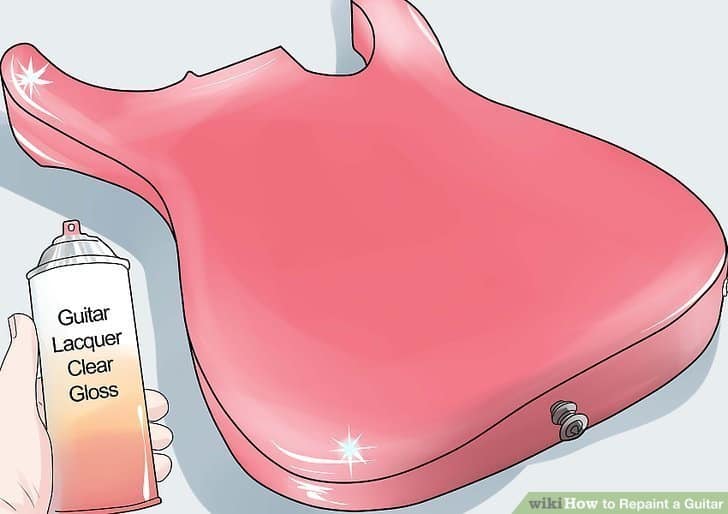
Image from WikiHow
Once your stain or your paint has dried for a week, you should apply a clear coat to your instrument.
A nitrocellulose clear coat is highly recommended (like this one). Make sure that when you’re applying your coats of clear coat that you do apply the coat as thin as you possibly can, applying the second layer after the first layer has dried, and so on.
You may even need up to add up to a dozen coats to get a factory finish. If you happen to choose a nitrocellulose or a polyurethane finish, you should wait between three to four week for the paint to completely harden. However, if you happen to use an oil-based finish, you’re only going to need to wait a few days for everything to harden.
20. Polish the finish
Don’t dry sand the polish (use a wet sanding technique)! When you’re sanding the polish, make sure that you are doing wet sand on the hardened finish starting with a fine grit (400) and to a more rough grit (2000). Your grit process should go from 400 grit, 600 grit, 800 grit, 1000 grit, 1200 grit, 1500 grit, and 2000 grit. Here’s a good multi-pack of sandpaper grit here.
Don’t skip over or miss any scratches, swirls, or tiny pits in the finish or otherwise; they will be impossible to get out.
Also, ensure that you don’t sand through the clear color coat and into the color, so be extremely careful when you’re sanding near the edges that way you don’t sand into the paint.
21. Reassemble your Guitar
Now that all of the paint is dried and you’ve sanded everything down screw or bolt your guitar’s hardware back together.
If you had to snip any wires to take apart your guitar, you’re going to have to solder the wires back together. This would be a great time to replace any cheap factory components with higher quality ones.
This is also the time where you can replace your old pickguard with something new! Once you have your instrument assembled again, you can clean and shine your guitar with your typical guitar polish. Then string it, tune it, and play!
Whether you’re buying your first guitar or building your dream studio, get your gear from a place you can trust, from people that care. Since 1979, Sweetwater has been committed to giving music makers the ultimate shopping experience.
The Final Brush: Repainting a Guitar
If you happen to decide that you’re going to remove any old paint with paint stripped, but be extremely cautious when doing so! Use a quality paint respirator and make sure to do this outside, as paint stripper is toxic and carcinogenic, so using your paint stripped outside will be much safer for your personal health.
Also, always make sure that you wear eye goggles and a dust mask when you’re sanding! Be careful, be patient, and good luck on epainting your guitar!
(Images courtesy of Wikipages)
Embrace the opportunity to discover your musical talents with Guitar Center's exceptional Daily Pick, designed to unleash your inner musician. With the finest offer of the day, you can indulge in a world of musical possibilities and take your skills to new heights.
Further Reading on Guitar Maintenance & Projects:
- How to Properly Maintain Your Acoustic Guitar to Build Lasting Love
- How to Properly Clean Your Guitar Strings
- How to Clean a Rosewood Fingerboard
FAQs About Guitar Repainting
How long does it take to repaint a guitar?
Repainting a guitar might take from 3 days to 2 weeks, depending on the method of painting that you choose and the weather conditions. Laquer takes about 48 hours to dry, whereas spray paint takes 30 minutes to 1 hours to dry.
How much does it cost to repaint a guitar?
This is also up to the choice of color and method, but for starters, you will need around $250 bucks to DIY at home, although we always advise you to trust professionals with your beloved instrument.
Does refinishing a guitar affect its value?
Unfortunately yes. Refinishing a guitar can decrease its value for half of the price on the collector’s market, no matter how great the finish is.
- Best Black Friday / Cyber Monday Guitar Deals: Guitars, Amps, More! - November 27, 2023
- The Ultimate Yamaha C40 Classical Guitar Review You’ll Love - August 23, 2023
- The Best 12-String Guitars Guide - August 22, 2023

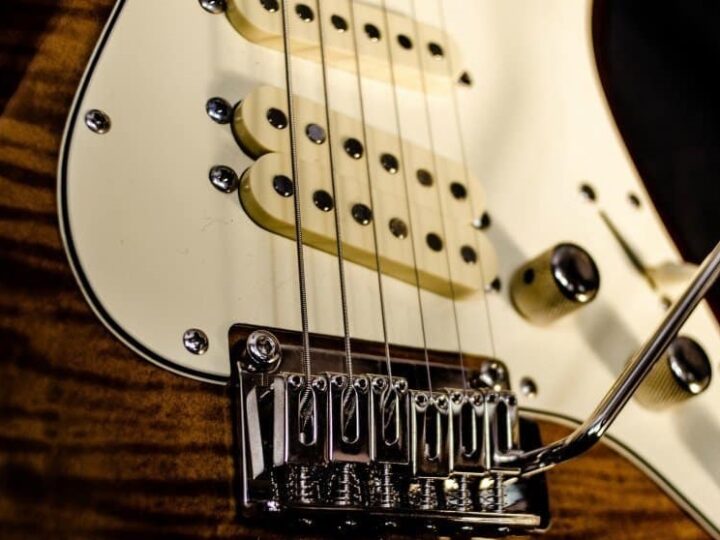
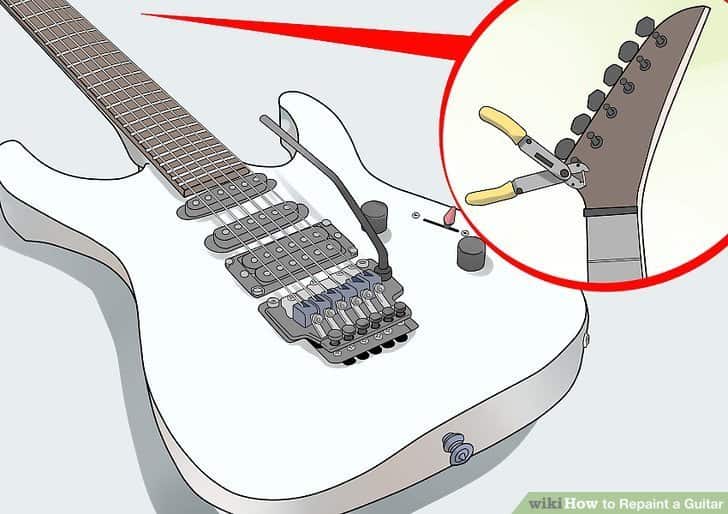

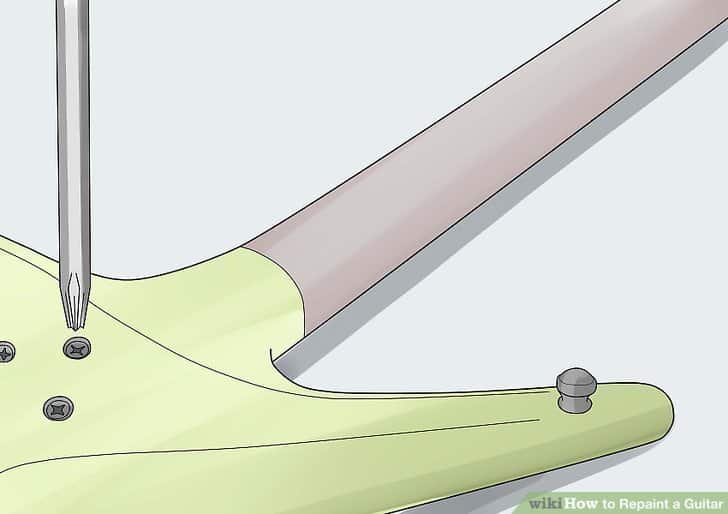
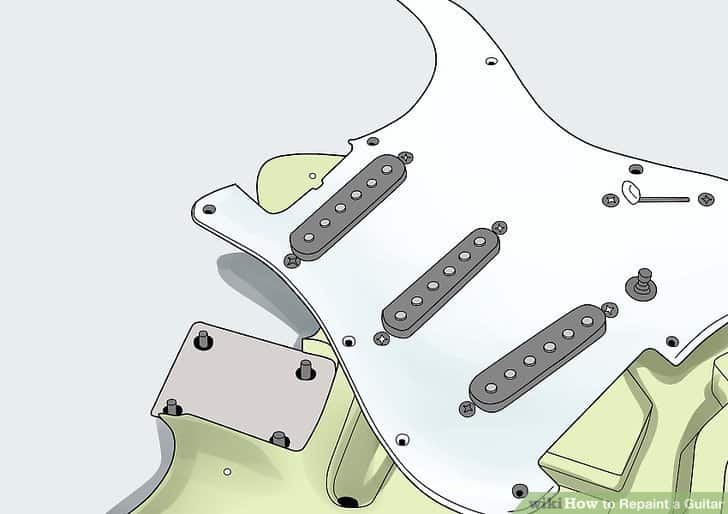

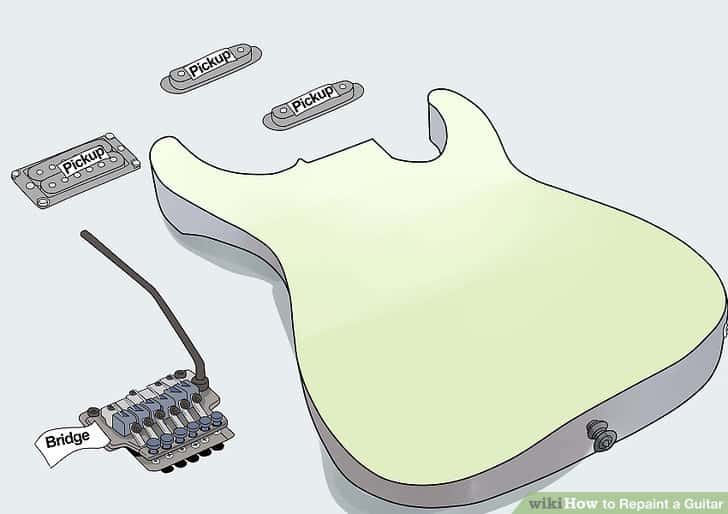
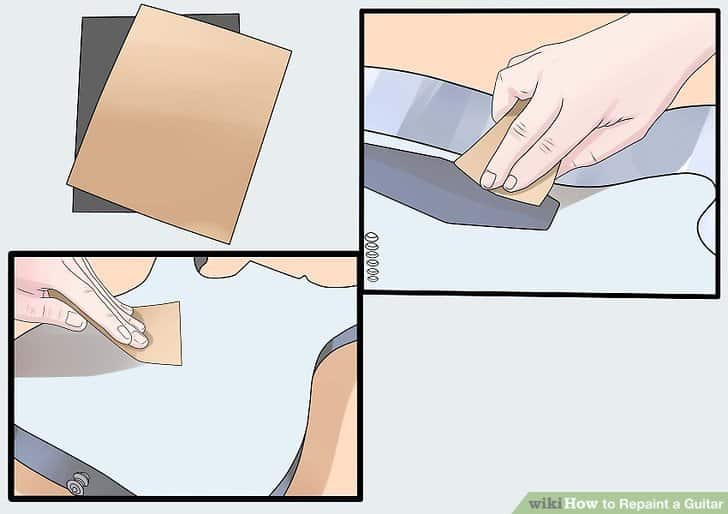
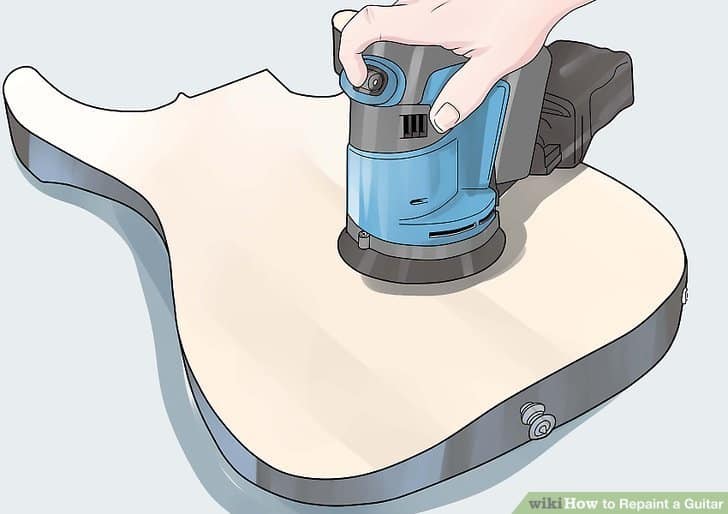

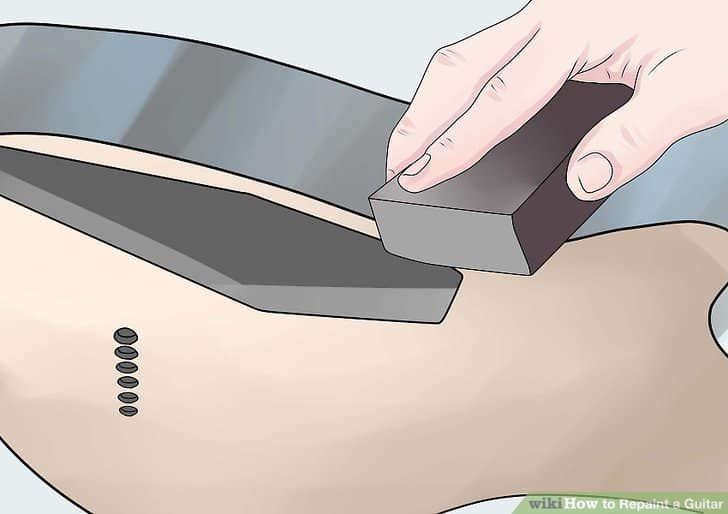

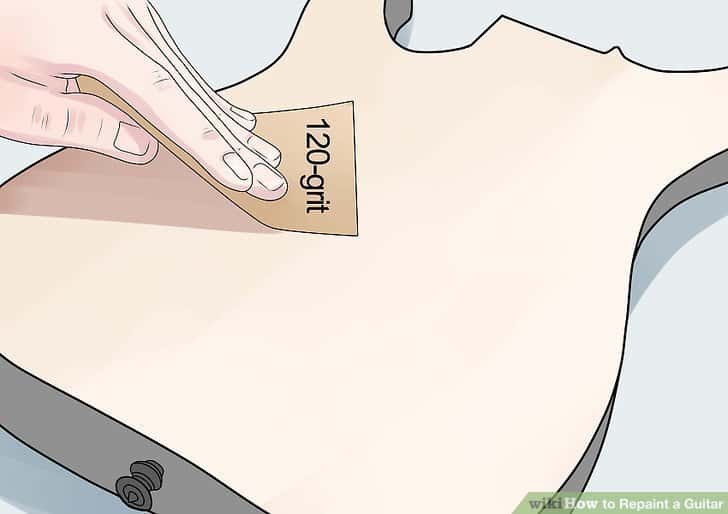

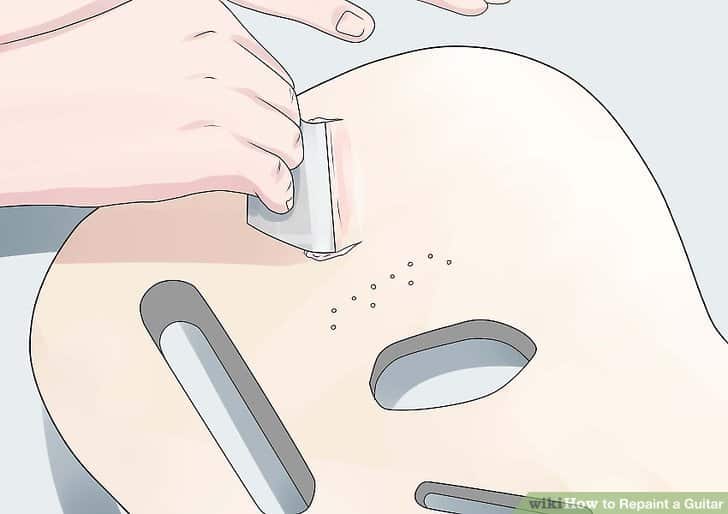

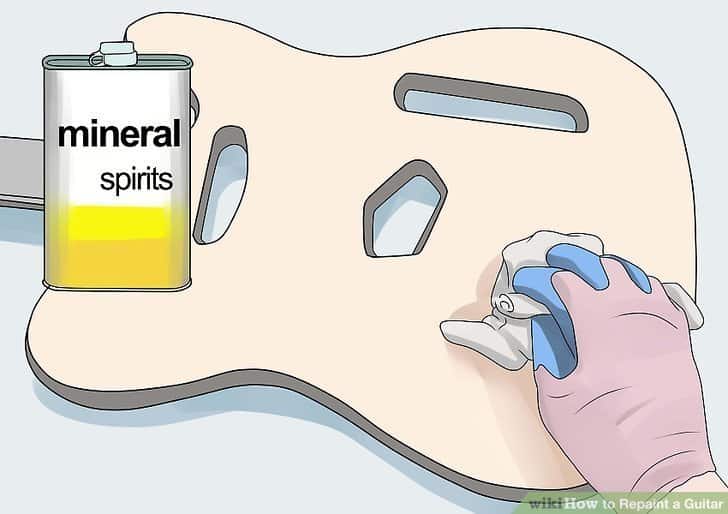
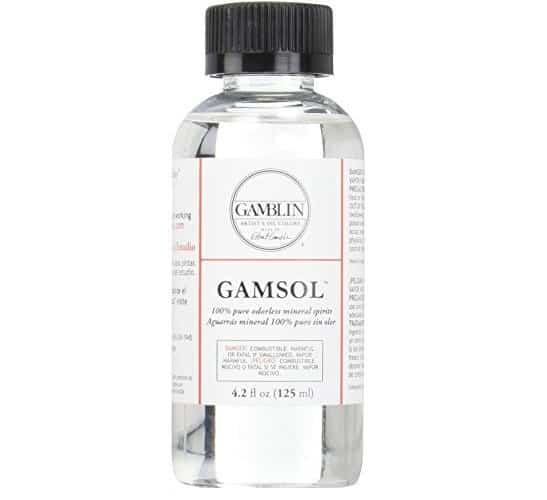
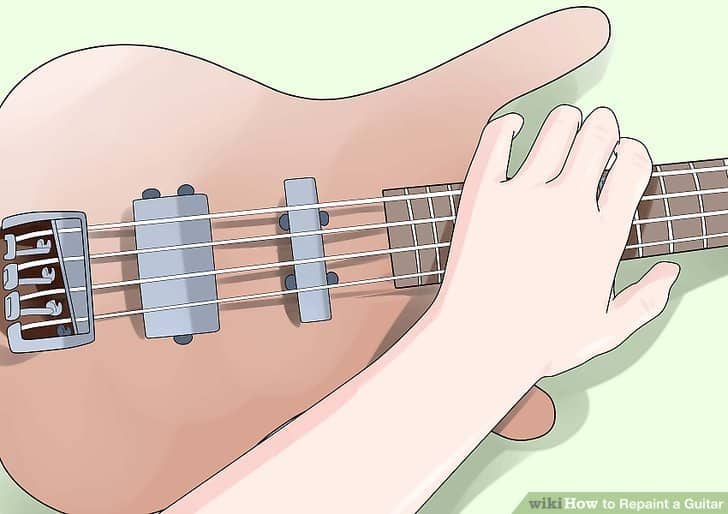
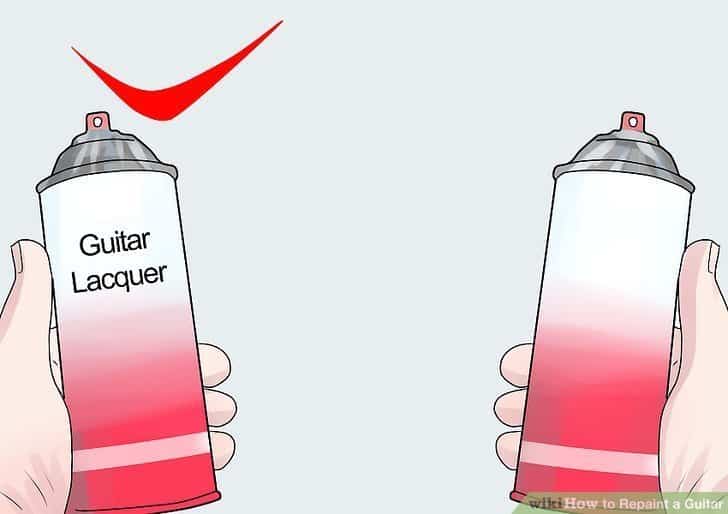

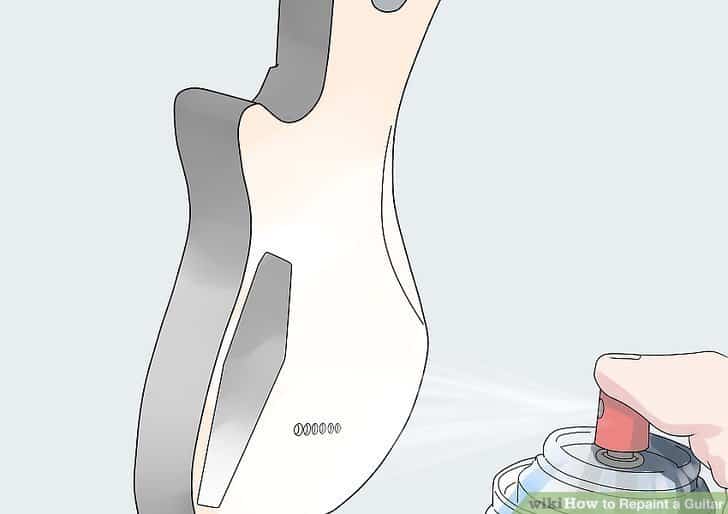
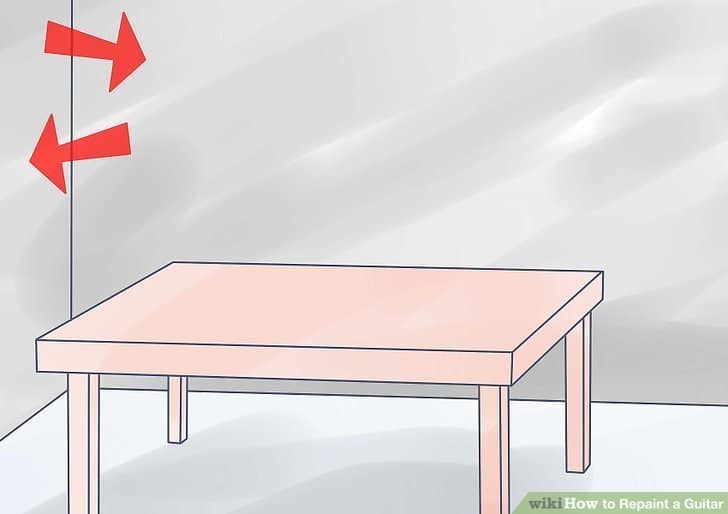
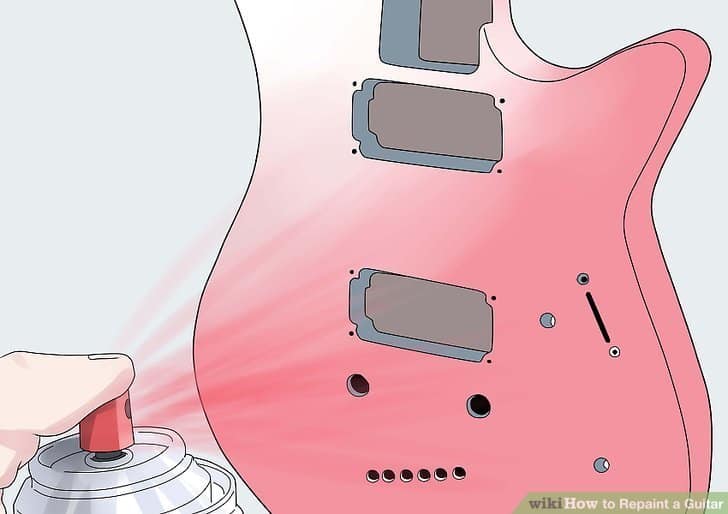

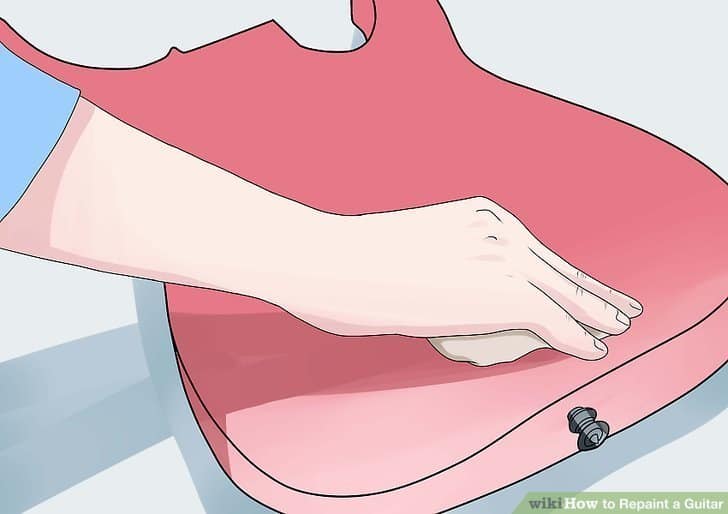

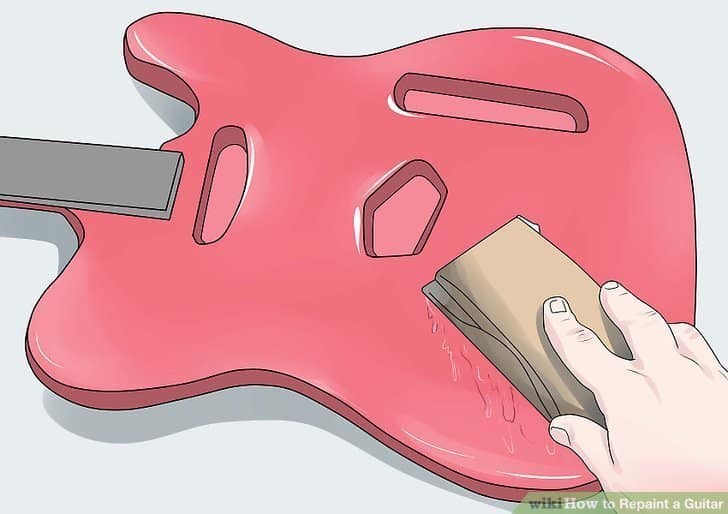

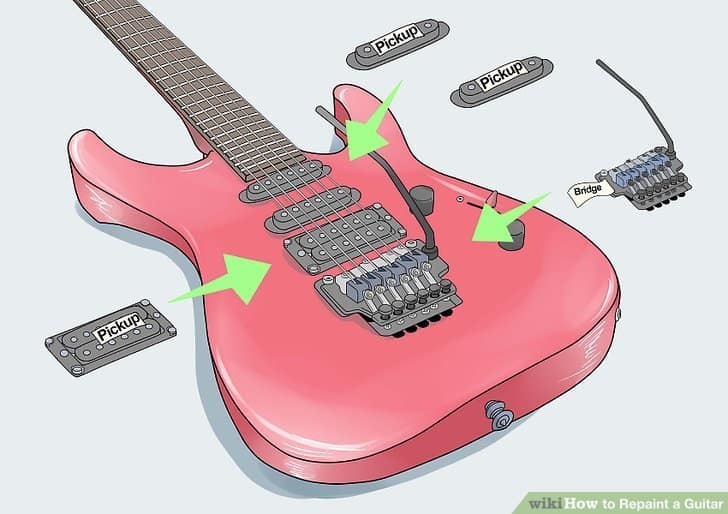


john t.
Wednesday 28th of September 2022
This was very informative. My question is attempting to / how to REFINISH the Head Stock, ie Changing the color of the head stock, working around mother of pearl Inlays of Gretsch or Gibson and it looking "stock", NOT cobbed-up or looking like an obvious Refinish job. You Tube doesn't really have any Vidz on this topic, and the one I saw looked extremely amateur'sh . .. thoughts !
Timothy Tolbert
Monday 2nd of November 2020
Good stuff, im just starting to project four old guitars that are past there prime from the ground up. New guts, reshaping, paint... the works. So these little gems of insight are priceless to me. One of my dearest friends is a Luther. But I haven't told him yet and I am not gonna til its done. Wanna see if I can do this on my own. Any info you have on the different wiring strategies for HSH or HHH, HSS, etc would be greatly appreciated. Or if you know of a site that has this info at the ready please let me know. Keep up the good work and enjoy.
Wayne R Wright
Friday 9th of October 2020
Im repainting my guitar with a solid color,now after each primer coat do i sand and than apply another coat of primer,the same with the base coat,or do i add multipal coats before sanding,i have never done this before so all help will be appreciated.Painting is all new to me,so please bare with me and help me to paint my guitar. If u need anymore info just let me know